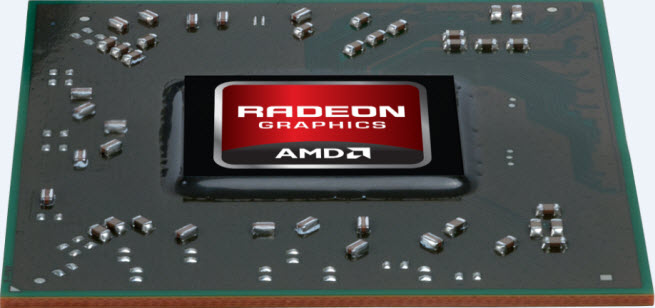A day after Intel launched its Ivy Bridge combo graphics-microprocessor chips, Advanced Micro Devices is launching a new series of fast and power-efficient graphics processing units (GPU) for notebook computers.
[aditude-amp id="flyingcarpet" targeting='{"env":"staging","page_type":"article","post_id":420458,"post_type":"story","post_chan":"none","tags":null,"ai":false,"category":"none","all_categories":"business,games,","session":"D"}']The new AMD Radeon HD 7900M, 7800M, and 7700M series are aimed at both high-end gamer laptops as well as thin media-rich laptops. The products are aimed at beating back competition from both Intel and Nvidia.
The new AMD GPUs use the “Graphics Core Next” architecture introduced last fall with the 40-nanometer 7000 series chips. But the new ones are more advanced and power efficient because they use a 28-nanometer manufacturing process; i.e., the circuits are a mere 28 nanometers apart. (A nanometer is a billionth of a meter.)
AI Weekly
The must-read newsletter for AI and Big Data industry written by Khari Johnson, Kyle Wiggers, and Seth Colaner.
Included with VentureBeat Insider and VentureBeat VIP memberships.
The improvements in the manufacturing process and design that come with the new GPUs will enable video game graphics that run much faster than the previous generation of mobile graphics chips. AMD says that the HD7970M can run Deus Ex: Human Revolution 16 percent faster than Nvidia’s GTX675M. That’s not much. But it also says that it can run Aliens vs. Predator (2010) as much as 76 percent faster than the Nvidia chip based on benchmarks provided by AMD.
They also feature AMD App Acceleration, which means that non-graphics computer applications will be able to run faster. And they are more power efficient thanks to features such as AMD Enduro technology, AMD Powergate, and AMD ZeroCore technology.
“We’re bringing a lot of innovation to notebook computers,” said Ogi Brkic, an AMD product manager.
The high-end 7900M graphics chip has 1,280 components known as stream processors. It runs at 850 megahertz and can compute 2,176 gigaflops (a measure of math-intensive performance). The chip can power as many as six displays. The 7900M is shipping now. The 7800M graphics chip has 640 stream processors, runs at 800 megahertz, and can compute at 864 gigaflops. And the low-end 7700M graphics chip has 512 stream processors, runs at 675 megahertz, and can compute 589 gigaflops.
The AMD Enduro technology is like Nvidia’s Optimus. It switches between the processor’s integrated graphics or a discrete graphics chip, depending on the graphics task at hand. The AMD Powergate technology shuts down parts of the graphics chip when they are not in use, reducing static screen power by 34 percent. The ZeroCore technology turns off a lot of functions in the graphics chip when the core is idle. It also controls additional graphics chips in the system and consumes less power as needed. ZeroCore reduces idle power consumption by 86 percent.
Intel launched its Ivy Bridge microprocessors on Monday, and computer makers are announcing a bunch of systems that combine Ivy Bridge and graphics chips from AMD’s arch rival, Nvidia. Toshiba and Alienware have combined both Nvidia GeForce 600M graphics chips and Intel Ivy Bridge processors in new systems. Both of those systems were built from the ground up for performance and power efficiency. Alienware has announced a new laptop with the AMD chips, and more are expected soon.
[aditude-amp id="medium1" targeting='{"env":"staging","page_type":"article","post_id":420458,"post_type":"story","post_chan":"none","tags":null,"ai":false,"category":"none","all_categories":"business,games,","session":"D"}']
Nvidia says it expects to garner the lion’s share of Intel Ivy Bridge notebooks with discrete graphics chips. Of course, some computer makers will simply use Ivy Bridge chips, which combine decent graphics and a microprocessor on the same chip, as the only major computing chip in stripped-down laptops or Ultrabooks. In that kind of scenario, both AMD graphics and Nvidia lose out.
AMD is now ramping up its production of its code-named Trinity processors, which are expected to compete head-on with Intel’s Ivy Bridge chips. As you can see, the competition has become multi-dimensional in the processor-graphics market.
VentureBeat's mission is to be a digital town square for technical decision-makers to gain knowledge about transformative enterprise technology and transact. Learn More

